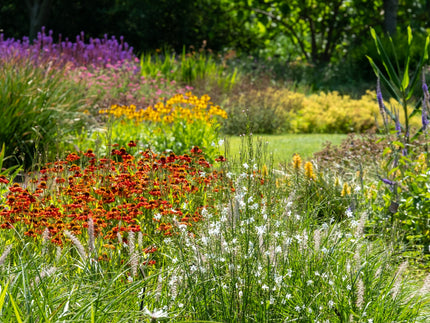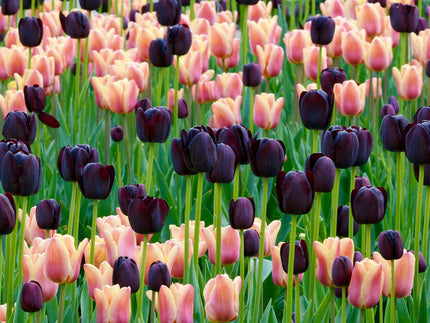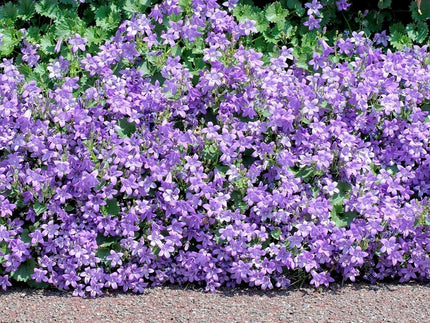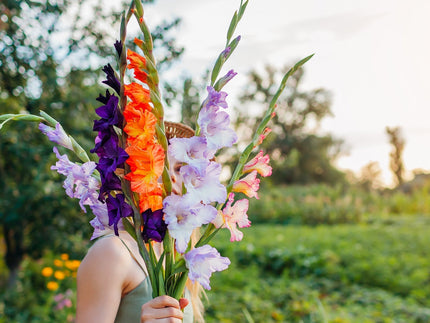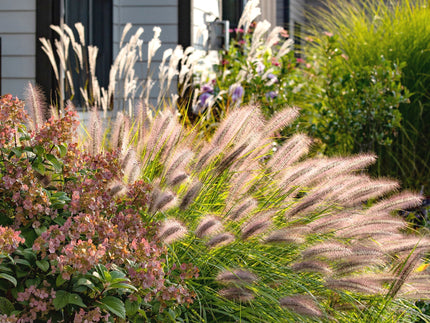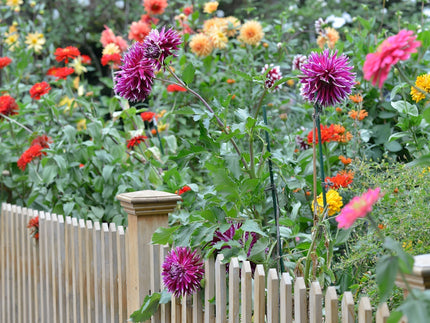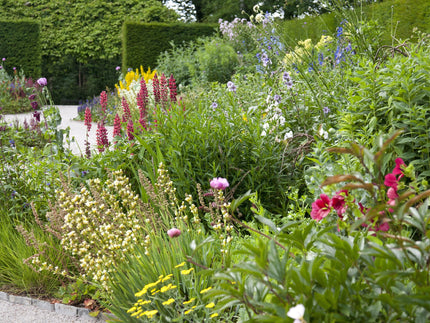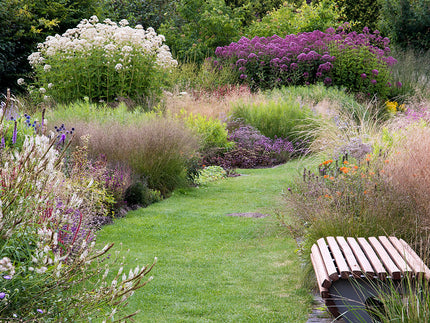Delphinium
Known and loved for their cottage-garden charm, the tall spires of Delphinium blooms in their beautiful shades of blue and mauve bring height, colour and a vertical accent to borders. The nectar-rich blooms are a magnet for bees too. Being tall, they work well to disguise a fence or at the back of a border where they can tower above lower growing plants. These perennials are resilient and robust once established, but a little sensitive at first. Therefore, bare root Delphiniums should be potted and grown on outdoors for a few months before planting into borders with free-draining soil. Once settled, they will grow back in the garden every summer for years.
How to plant
- Plant Delphinium bare roots in spring between February and May, ideally within a week of delivery.
- Soak the roots in water for 3-6 hours prior to planting. Pot into temporary 2 litre (or 15-20cm diameter) pots, using a good quality multi-purpose compost.
- Plant with the roots submerged and with the top of the root system with buds just level with the soil surface. Any shoots or leaves which have emerged already should be left exposed above the soil surface.
- Grow them on in a sheltered area outside. They can be transplanted into suitable growing positions after 2-4 months or once growth is established and the plants easily come out of the temporary pots with the soil held together by the roots.
- When planting into the garden, choose a sunny position with free-draining soil. Ensure the area is dug over and cleared of weeds first.
- Keep space clear around the young plant and ensure neighbouring plants or weeds are not overcrowding it.
-
Delphinium is hardy to around -10C and does not require winter protection in most areas.
- Water-in after planting and keep hydrated when in growth, particularly during the first year.
Aftercare
- New growth emerges within around a month of planting. New leaves appear every spring, followed by flowers in summer. They may not flower in the first year.
- Remove the flower spike once the flowers have started to fade. Allow the leaves to remain on what's left of the stem until autumn.
-
Delphinium dies back in autumn, at which point you can cut stems back to around 3cm above soil level. New foliage emerges from the base of the plant the following spring.
-
Delphinium is a clump-forming perennial and over time the root system will increase in size and the plant will also grow larger each year and produce a greater number of flower spikes.
- Delphinium should be planted at a spacing of at around 30cm between plants if planting in groups and typically take 1-2 years to establish.





















































































